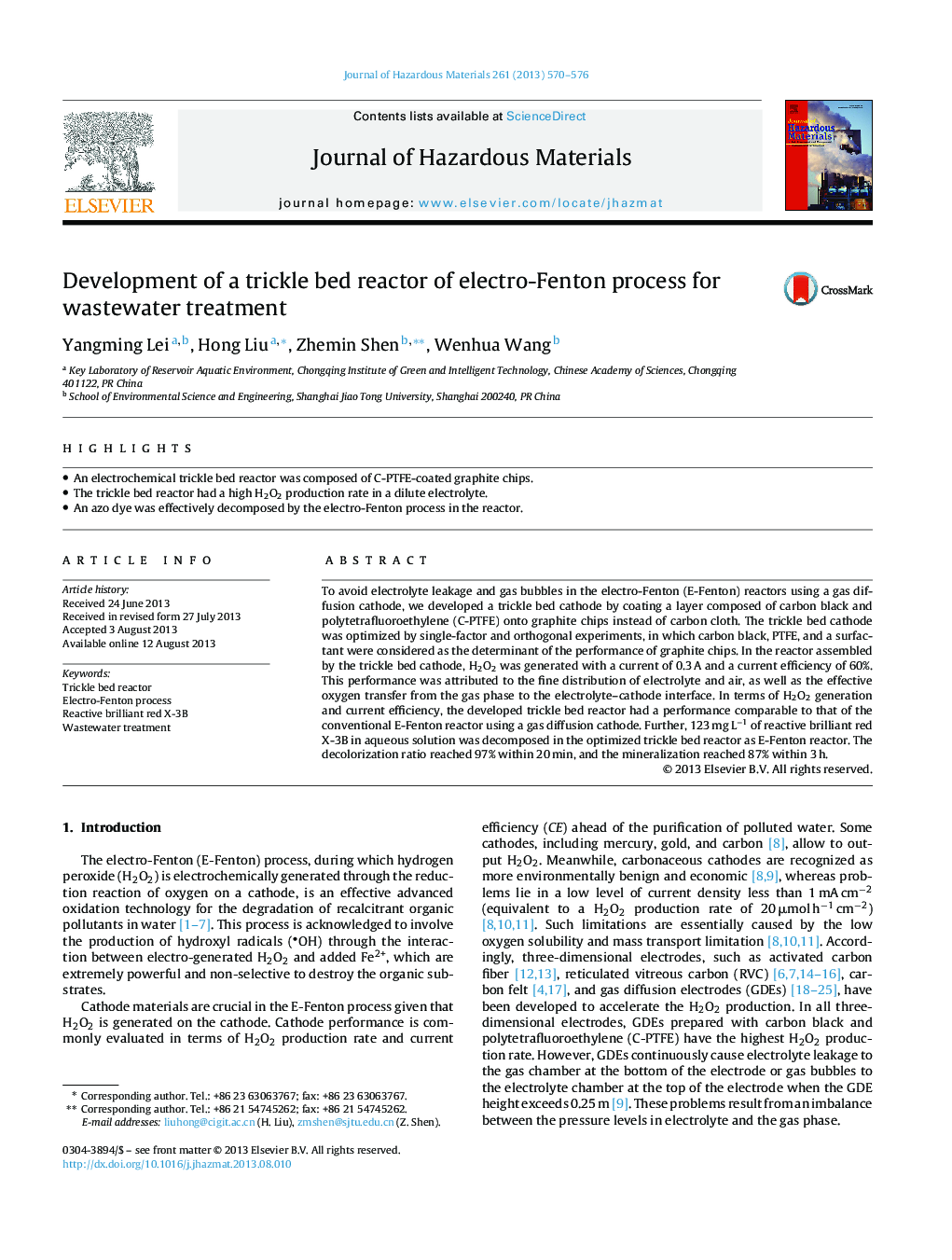| Article ID | Journal | Published Year | Pages | File Type |
|---|---|---|---|---|
| 6972123 | Journal of Hazardous Materials | 2013 | 7 Pages |
Abstract
To avoid electrolyte leakage and gas bubbles in the electro-Fenton (E-Fenton) reactors using a gas diffusion cathode, we developed a trickle bed cathode by coating a layer composed of carbon black and polytetrafluoroethylene (C-PTFE) onto graphite chips instead of carbon cloth. The trickle bed cathode was optimized by single-factor and orthogonal experiments, in which carbon black, PTFE, and a surfactant were considered as the determinant of the performance of graphite chips. In the reactor assembled by the trickle bed cathode, H2O2 was generated with a current of 0.3 A and a current efficiency of 60%. This performance was attributed to the fine distribution of electrolyte and air, as well as the effective oxygen transfer from the gas phase to the electrolyte-cathode interface. In terms of H2O2 generation and current efficiency, the developed trickle bed reactor had a performance comparable to that of the conventional E-Fenton reactor using a gas diffusion cathode. Further, 123 mg Lâ1 of reactive brilliant red X-3B in aqueous solution was decomposed in the optimized trickle bed reactor as E-Fenton reactor. The decolorization ratio reached 97% within 20 min, and the mineralization reached 87% within 3 h.
Related Topics
Physical Sciences and Engineering
Chemical Engineering
Chemical Health and Safety
Authors
Yangming Lei, Hong Liu, Zhemin Shen, Wenhua Wang,
